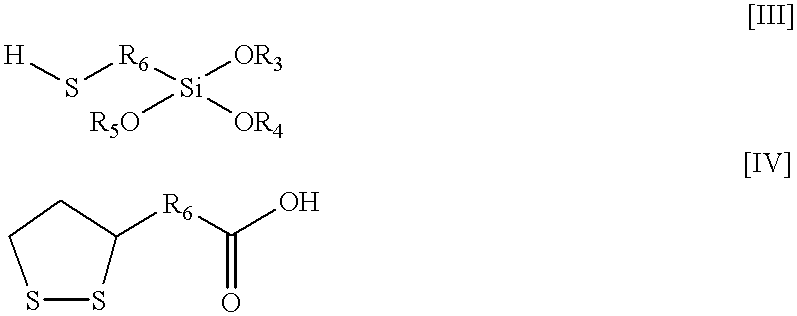Seal for electrochromic devices
a technology of electrochromic devices and seals, applied in non-linear optics, instruments, optics, etc., can solve problems such as difficult placement of thin metal layers on the second or third surface, cte mismatch problems, and difficulty in ensuring adequate seal integrity, so as to improve the adhesion of the seal member 116
- Summary
- Abstract
- Description
- Claims
- Application Information
AI Technical Summary
Benefits of technology
Problems solved by technology
Method used
Image
Examples
example 2
Electrochromic elements were made by the same methods as example 1 with the following modifications:
The silver of the 3.sup.rd surface reflector was replaced with one of the following three alloys:
3% palladium in silver (to be designated 3% Pd in Ag)
6% platinum in silver (to be designated 6% Pt in Ag)
15% gold in silver (to be designated 15% Au in Ag)
The epoxy resin systems were modified as follows: The base resin was comprised of 93% by weight D.E.N. 431 and 7% of a different surface modified fumed silica (TS 720 from Cabot) that has been vacuum mixed in a planetary mixer prior to the addition of other materials. As per the final resins in example 1 the final resins of example 2 all contain (by weight) 1% 137 um glass beads, 1 / 2% aminosilane (A-1120) and 36% amine curing agent (Ancamine 2049).
The differences in the final resins of example 2 are as follows:
Resin 2A-no other additives
Resin 2B-1 / 2% (by weight) mercaptopropyl trimethoxy silane
Resin 2C-2% thioctic acid
Resin 2D-2% DeGussa...
PUM
| Property | Measurement | Unit |
|---|---|---|
| diameter | aaaaa | aaaaa |
| wavelengths | aaaaa | aaaaa |
| temperature | aaaaa | aaaaa |
Abstract
Description
Claims
Application Information
 Login to View More
Login to View More - R&D
- Intellectual Property
- Life Sciences
- Materials
- Tech Scout
- Unparalleled Data Quality
- Higher Quality Content
- 60% Fewer Hallucinations
Browse by: Latest US Patents, China's latest patents, Technical Efficacy Thesaurus, Application Domain, Technology Topic, Popular Technical Reports.
© 2025 PatSnap. All rights reserved.Legal|Privacy policy|Modern Slavery Act Transparency Statement|Sitemap|About US| Contact US: help@patsnap.com



